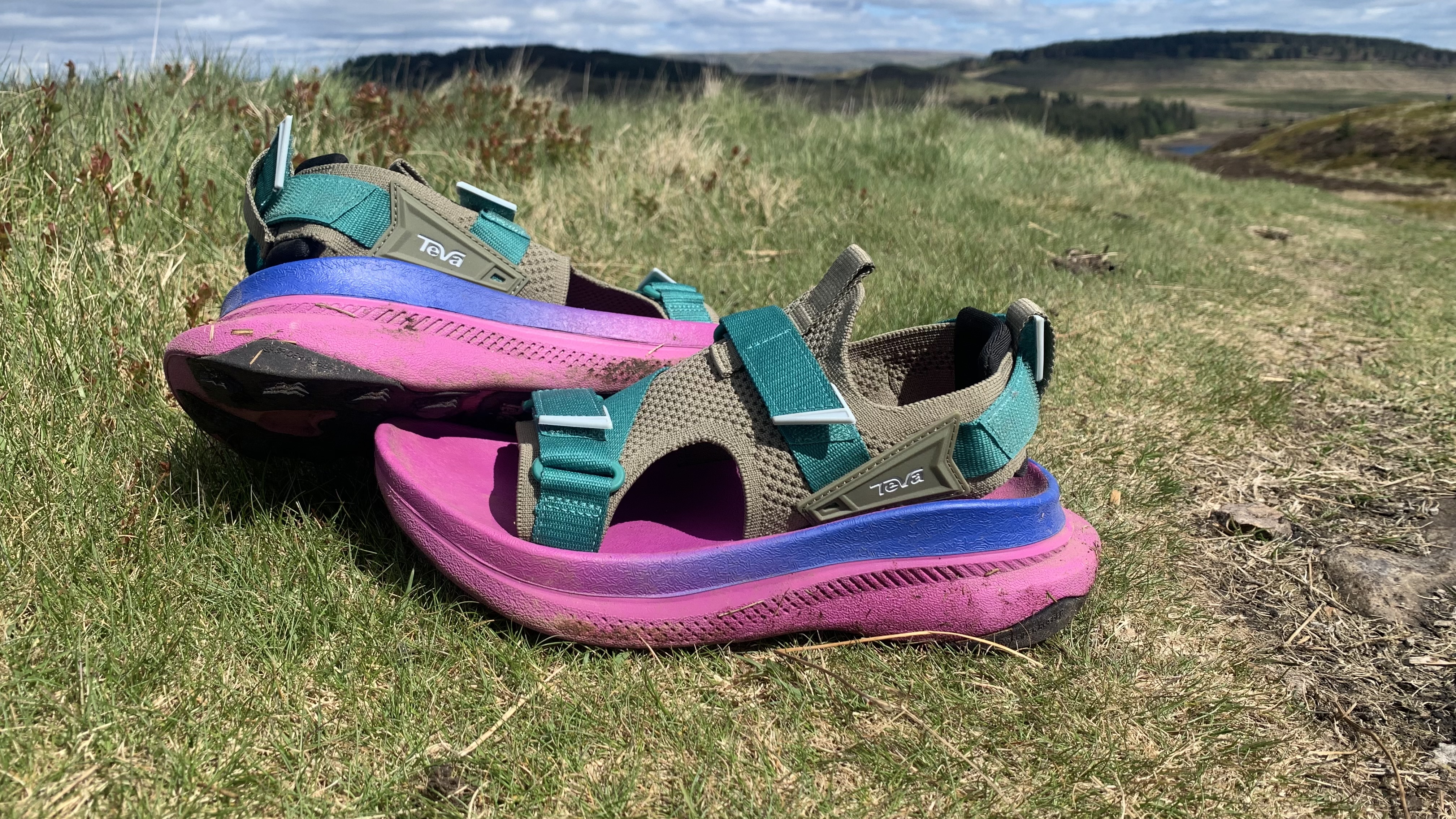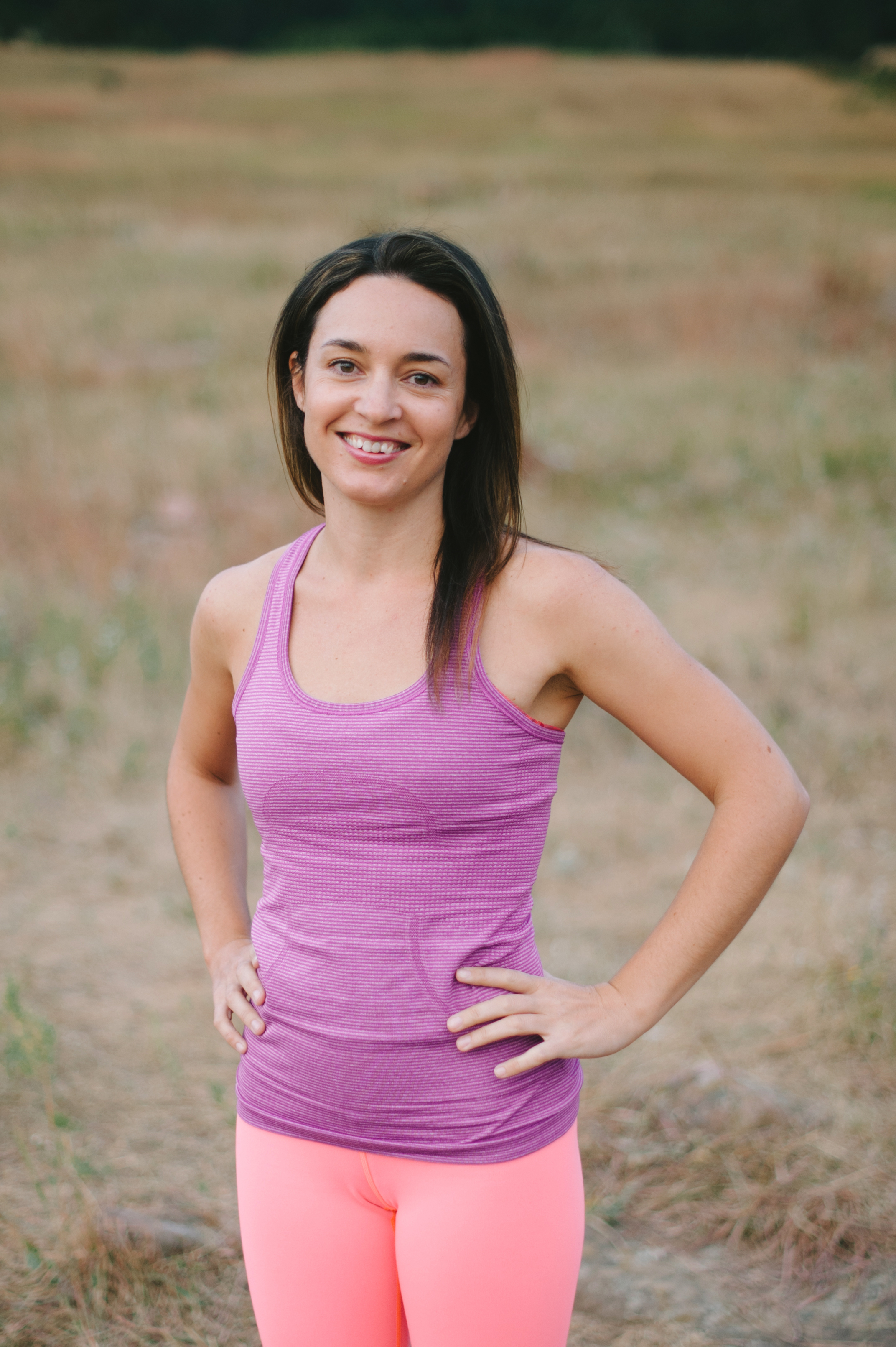Advnture Verdict
Unlike barefoot running sandals of days gone by, these trail running sandals take the maximalist approach popularized by Hoka and put it in a lightweight sandal that offers comfort and, more surprisingly, stability and grip (along with a little rubbing)
Pros
- +
Plush, responsive midsole
- +
Wide geometry offers more protection and stability than expected
- +
Surprisingly good grip
- +
Lightweight
Cons
- -
Some rubbing on pinkie toe
- -
Not be recommended for rocky, technical trails
You can trust Advnture
Teva Aventrail Running Sandals: first impressions
When Teva announced it was releasing its first-ever trail running sandal and that it would take its cues from maximalist shoes, we were intrigued. The best trail running shoes, after all, require stability and protection, and something about a bouncy sandal just felt a bit wrong.
Running sandals aren't exactly a new concept, though they're certainly niche, but past models have been of the minimalist variety, such as those designed by Xero Barefoot. But instead of a thin sole and thong upper, the Aventrails are a robust, chunky affair.
The key talking point is the beefy midsole, which looks more like one found on something like the Hoka Mafate X than any running or hiking sandal we've tested. It's composed of a responsive EVA foam on the bottom and a light supercritical foam underfoot, while a nylon plate sandwiched between the two is designed to add protection and stability.
When wearing them, the initial sensation is one of extreme plushness that I found stayed with me for up to two hours on the trail, and delivers quite a springy run. And despite how substantial they are, they’re really quite light.
• List price: $145 / £145
• Gender specification: Men's and women's
• Sizes available: Men's 8 - 13, Women's 6 - 11
• Weight (women's US 6 / UK 4, per shoe): 9.5oz / 270g
• Drop: 6mm
• Stack: 33.5mm (heel)
• Materials: EVA foam midsole, nylon shank, 88% textile/12% TPU upper, Spider Rubber outsole
• Best use: Light trail running
For the upper, Teva has combined its W strap system, which offers three points of adjustability using hook-and-loop fastenings, with a stretchy knit bootie that means none of the strap touches your skin. The result is a surprisingly snug fit where your foot doesn’t move around as much as you might expect, though I found that it wasn't totally free of rubbing. Wearing these with trail running socks would probably help, but I couldn't help thinking that’s defeating the purpose of running in sandals in the first place.
The whole point of these sandals is to get off the beaten (or paved) path, and I found the lugs on the Spider Rubber outsole to be a good match for both gravel roads and a mix of grass and bog.
It seems a bit redundant to mention that these sandals are breathable, because of course they are, and for that reason, they’re obviously a boon for running in hot weather, and they drain quickly if you meet water. When things get a little more technical, such as on steep singletrack, they do show a little weakness, but overall, they handle straightforward trails with aplomb, and they’re a great solution for adventure travel where you want versatile footwear that can be use for running and as a water shoe.
All the latest inspiration, tips and guides to help you plan your next Advnture!
Teva Aventrail Running Sandals: in the field
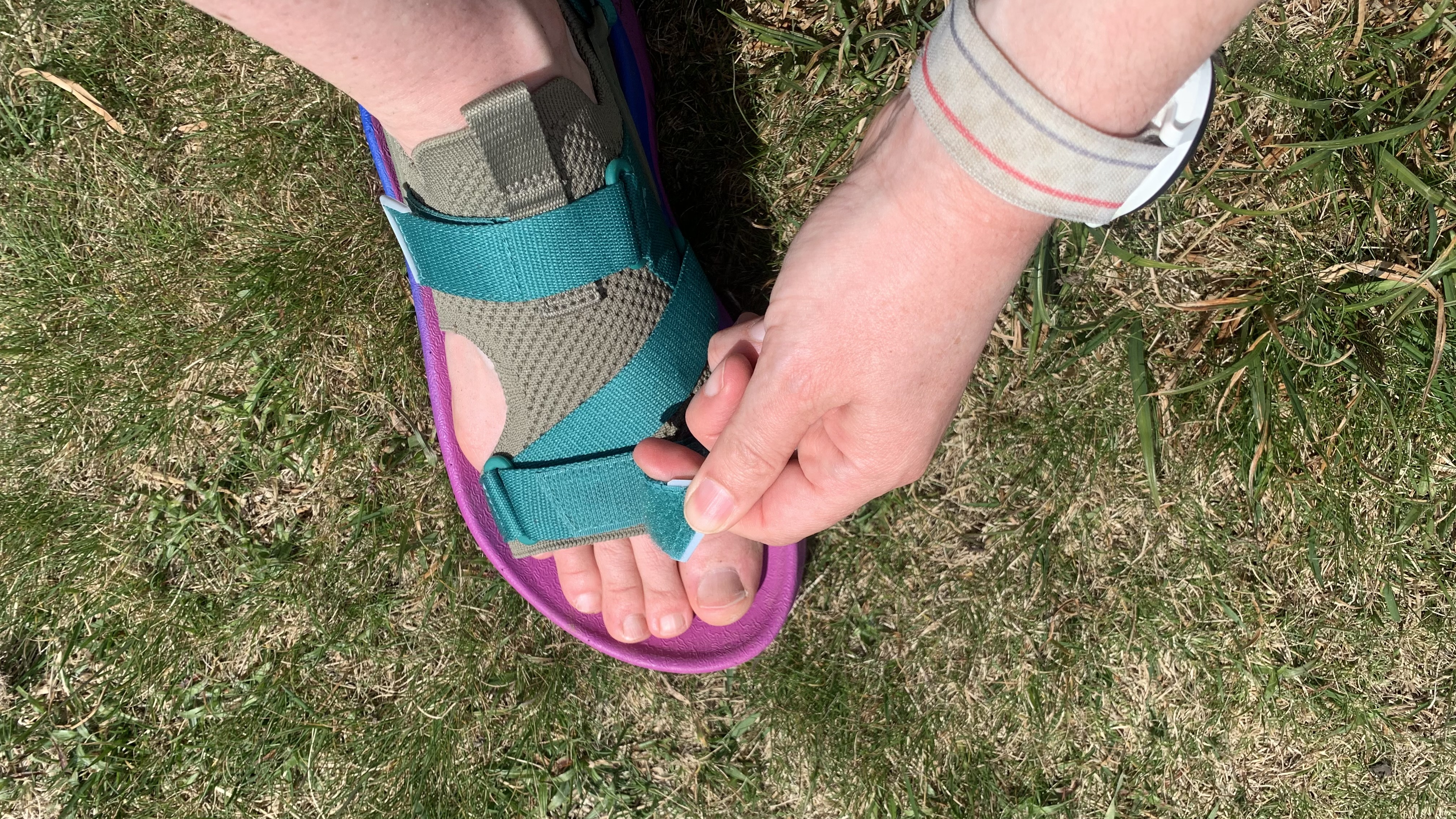
My first experience with Teva sandals was back in 2009. I’d just moved to the Rockies and got a pair for river trips and, because that's what everyone else was doing, open-toed summer hiking. The soles were stiff, the straps a little hard to adjust and not the most comfortable, and I wore them for years, though rarely for hiking. When I heard about the Aventrails, I was skeptical, but curious.
I decided to pick a trail that wasn’t hugely technical to test them out over a couple of runs. But I wanted to give them a proper run for their money, too, so I chose a trail system that has some steeper slopes mixed in with rolling terrain, lots of grass and bog, and a little gravel. The first time I wore them, I ran for about an hour, and the second time for two hours.
Here’s how they performed:
Sizing, fit and comfort
I tested a UK size 4 (US size 6), and found that they run true to size. That's a half size up for me, so it gives my feet a little room to swell, though I honestly wasn’t sure if that applies in sandals. Anyway, the upper is neither too tight nor too loose, and there’s little room at the end, but not so much that I trip over.
My first impression when I put these on was surprise at how comfortable they are. In fact, they feel a lot more like a cushy pair of Hokas (and I mean Bondi 8s) than what I usually associate with sandals, and they have a good deal of arch support, which is great for me. This meant ongoing comfort underfoot out on the trail, and after two hours of running, I didn’t have any foot fatigue and really enjoyed the barefoot sensation, even in boggy areas.
The only issue I’ve had with these sandals is that after about an hour, they start rubbing my outer pinkie toe, and I’m not totally sure why. It left me with a small blister and wasn’t too serious, but it made me nervous about wearing these for long days. In both cases, I wasn’t wearing socks with them, and I wonder if that would help, but I honestly can’t imagine the point of wearing running sandals with socks. Surely the appeal is the barefoot-and-free feeling?
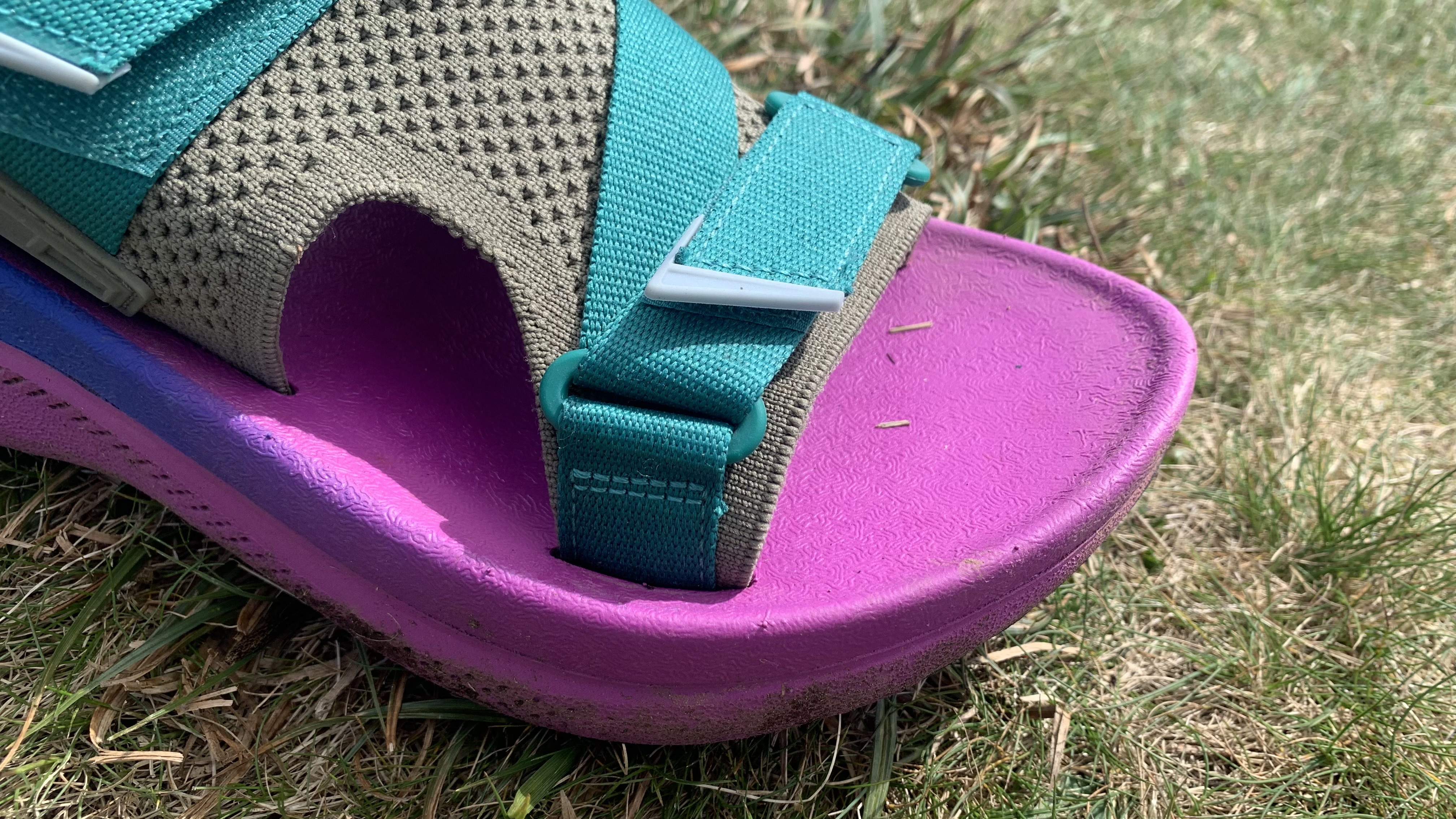
Stability and responsiveness
Because I’ve never run in sandals before, I started out really gingerly and made a point of using my running poles for stability. I just couldn’t believe that the high stack would be that stable and thought my feet would be slipping around, but amazingly, these performed pretty well, and as the miles went by, I started to get more confident and run faster and more naturally, even on steeper downhill sections.
The only time I had any issues with my feet sliding around was when I reached a particularly narrow bit of singletrack.
No surprises, but that high stack and nylon plate translate into a really smooth, responsive ride, even when I had to cross a short section of tarmac, and gives you almost no trail feedback besides that of bouncing.
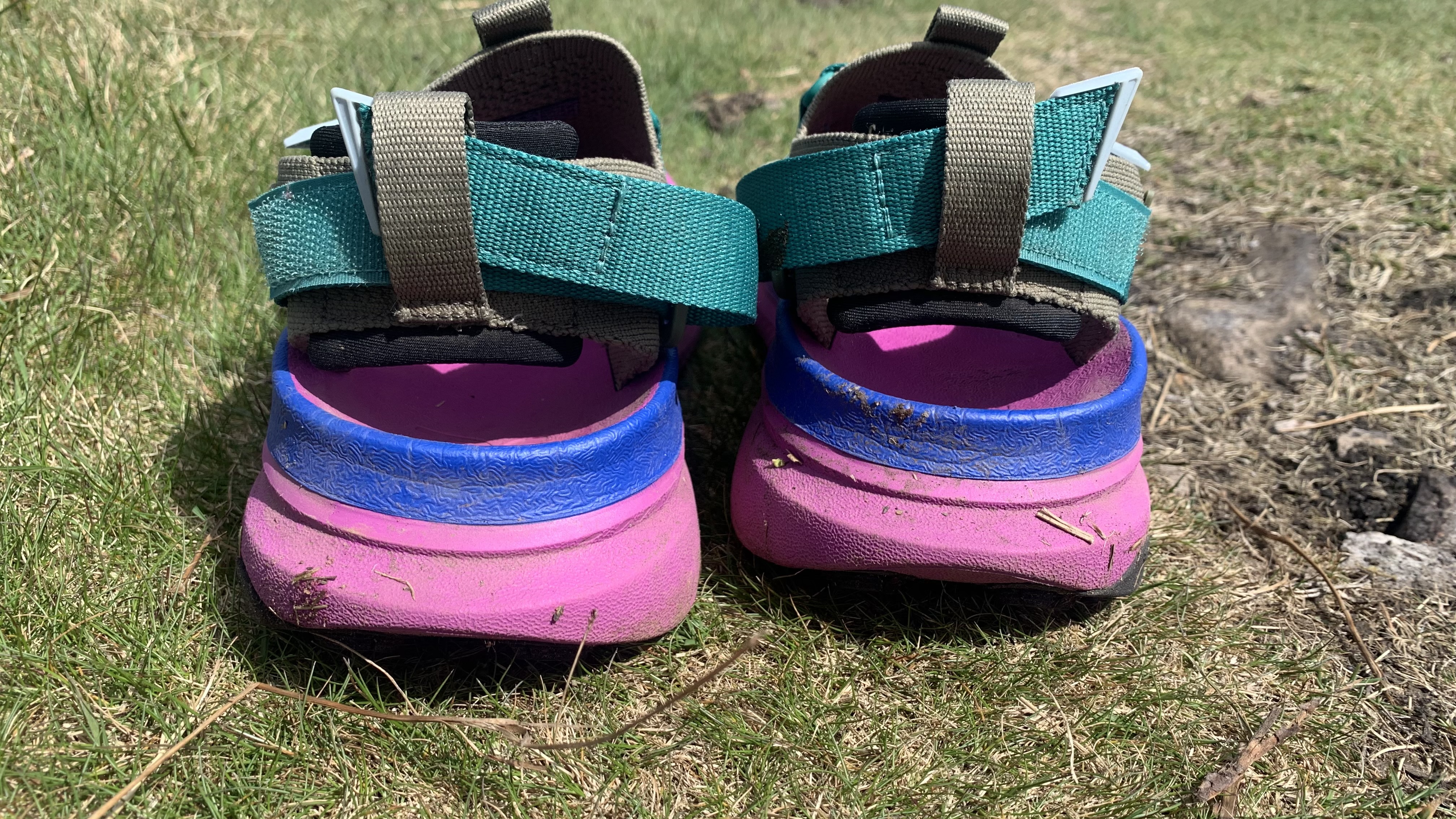
Protection and grip
Sandals and protection don’t exactly go hand-in-hand, but I haven’t had any problems with toe stubbing. I think it’s because the wide geometry essentially acts like the edge of a bumper car and deflects any rocks or roots. That said, I haven’t had these out on really rocky trails and the thought of it still makes me nervous.
I was fully expecting them to constantly trap small particles of dirt between my foot and the sandal (with my old Tevas I was constantly stopping to empty them out), but I had no such problems. It seems like the knit bootie works to keep grime out, or perhaps I'm just towering so high above the ground that no gravel reaches my feet.
The Spider Rubber outsoles have decent-sized tiered traction lugs and have sufficed perfectly well for the terrain I’ve used these in. I’ve never slipped, but the trails have been fairly straightforward and non-technical.
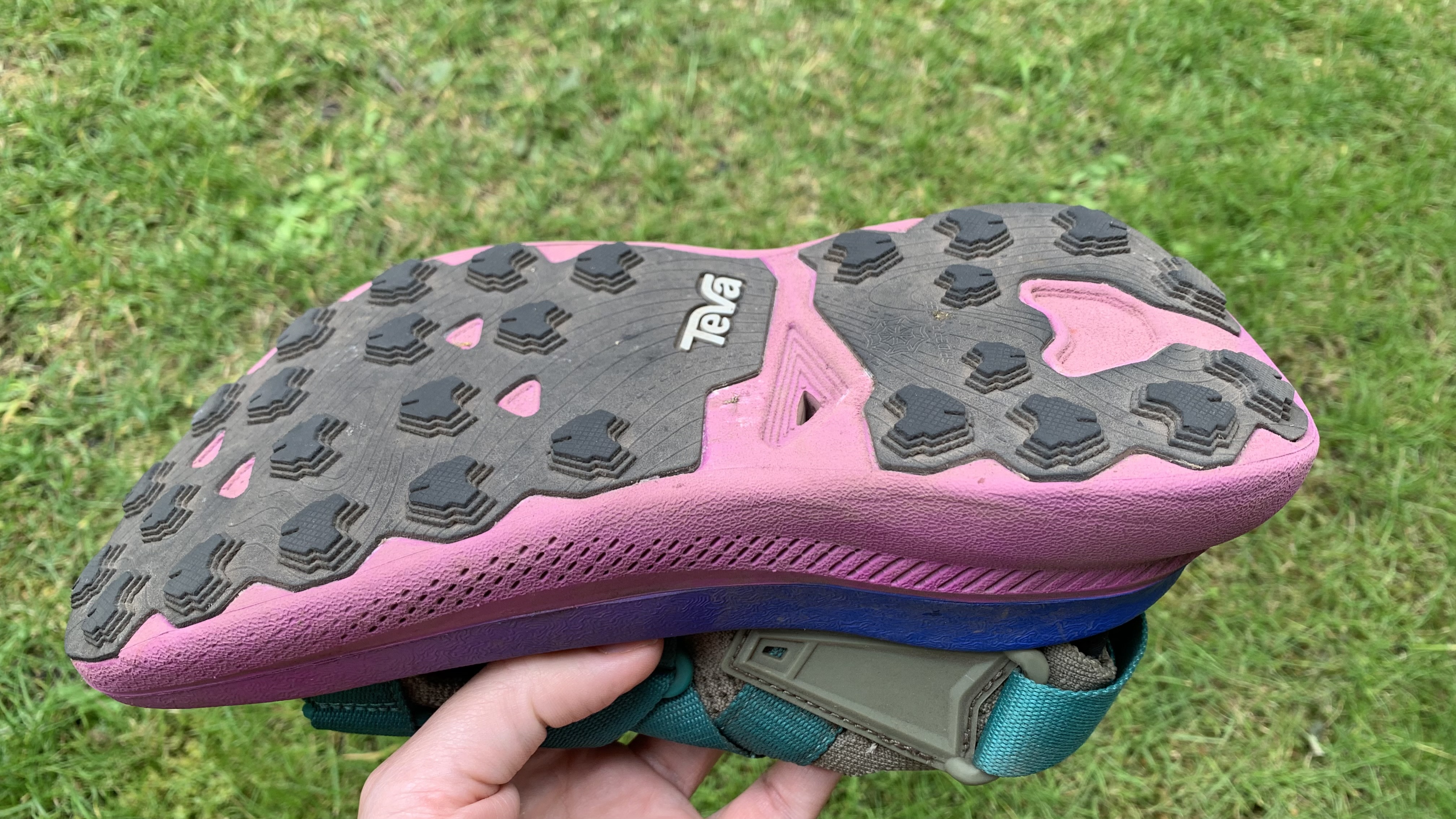
Should you buy?
If you’re a sandal fanatic, these shoes could be the ones you’ve been waiting for. They somehow manage to combine the bounce of a maximalist shoe with that fresh, open-toed feel, but the rubbing on the pinkie toes could pose a problem.
What these shoes do well is provide a solution to adventure vacations where you want to travel light. If I were going somewhere like Corsica or Gran Canaria where I was expecting warm weather and wanted to run, hike, and get in the water but didn’t want to check a bag in, I could realistically wear these shoes on the place and use them for all my activities.
Also consider
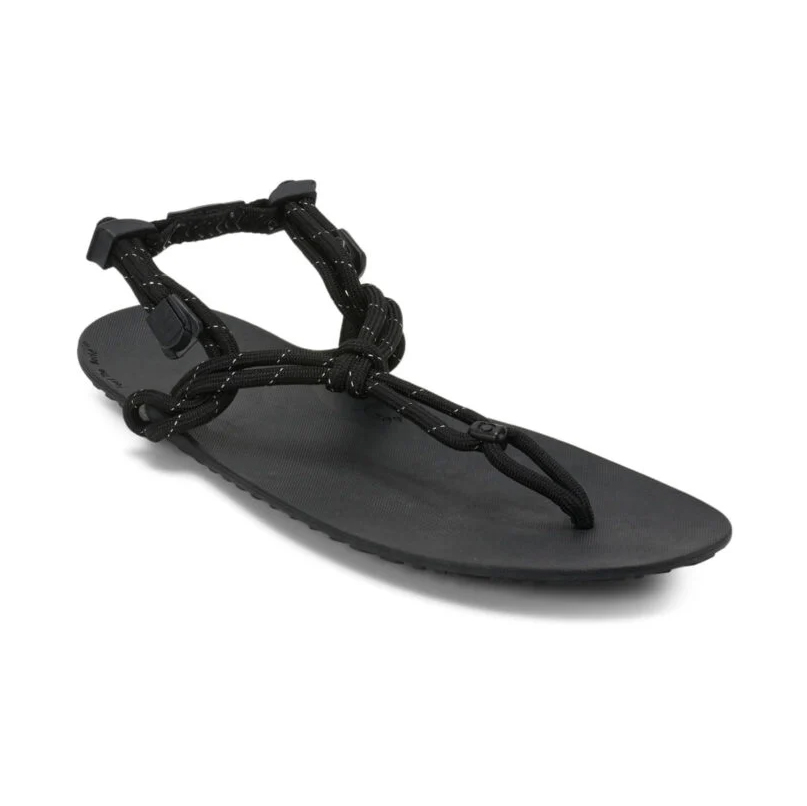
Unlike the Aventrails, the Xero Genesis will give you that true barefoot feel thanks to a mere sliver of rubber between your foot and the ground. You'll get all the trail feel you could possibly wish for and have just a smattering of protection from sharp stones, plus they weigh almost nothing and roll up to fit in your pocket when you're not using them.
Read our full Xero Genesis Running Sandals review.
Pros
- Comfortable, well-padded tongue and ankle cuff
- Gore-Tex waterproofing
- Supportive and stable
- Grippy Vibram sole
Cons
- Warmer and heavier than a fabric hiking boot
- Not the most cushioned underfoot
- No protective toe bumper or rubber rand
- Not cheap
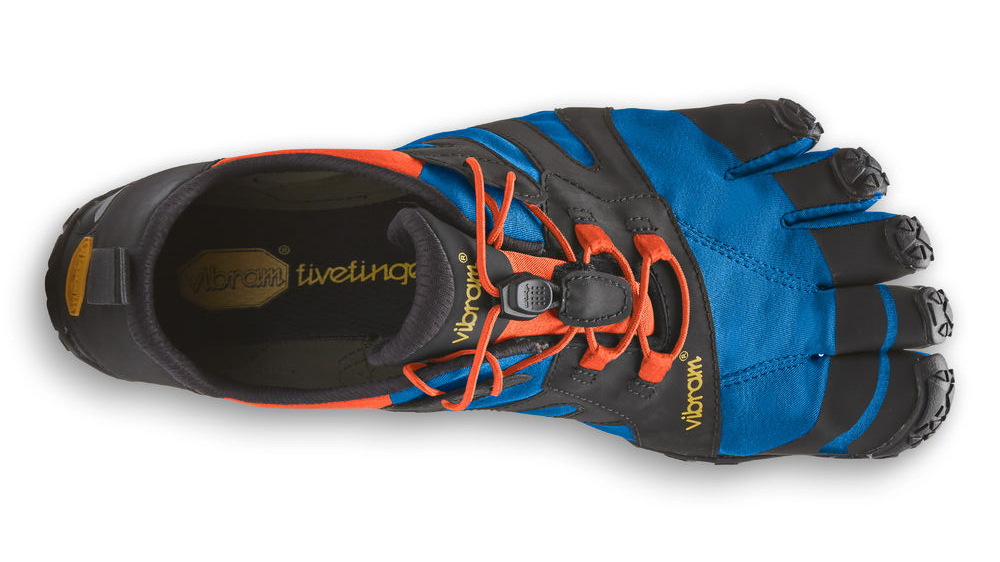
Though not sandals, these shoes could be worth a look if you're interested in a different approach to running that allows your toes to splay, only this time that's because each of your toes has its own individual pouch. That does mean these can be a little tricky to put on, but you still get a bit of that "naked" feel thanks to the minimalist sole, and the super sticky Vibram sole is built to stick to the trails.
Pros
- Light
- Well made
- Grippy
Cons
- Can be hard to put on (depending on toe shape)
- Expensive
Comparison table
Running sandal/shoe | Teva Aventrail | Xero Genesis | Vibram FiveFingers V-Trail 2.0 |
|---|---|---|---|
Price | $145 / £145 | $40 / £40 | $120 / £130 |
Weight (per shoe) | 9.5oz / 270g | 6oz / 170g | 7.8oz / 221g |
Drop | 6mm | 0mm | 0mm |
Best use | Light trail running | Light trail running | Great on all trails, with the exception of deep mud |
Julia Clarke is a staff writer for Advnture.com and the author of the book Restorative Yoga for Beginners. She loves to explore mountains on foot, bike, skis and belay and then recover on the the yoga mat. Julia graduated with a degree in journalism in 2004 and spent eight years working as a radio presenter in Kansas City, Vermont, Boston and New York City before discovering the joys of the Rocky Mountains. She then detoured west to Colorado and enjoyed 11 years teaching yoga in Vail before returning to her hometown of Glasgow, Scotland in 2020 to focus on family and writing.
